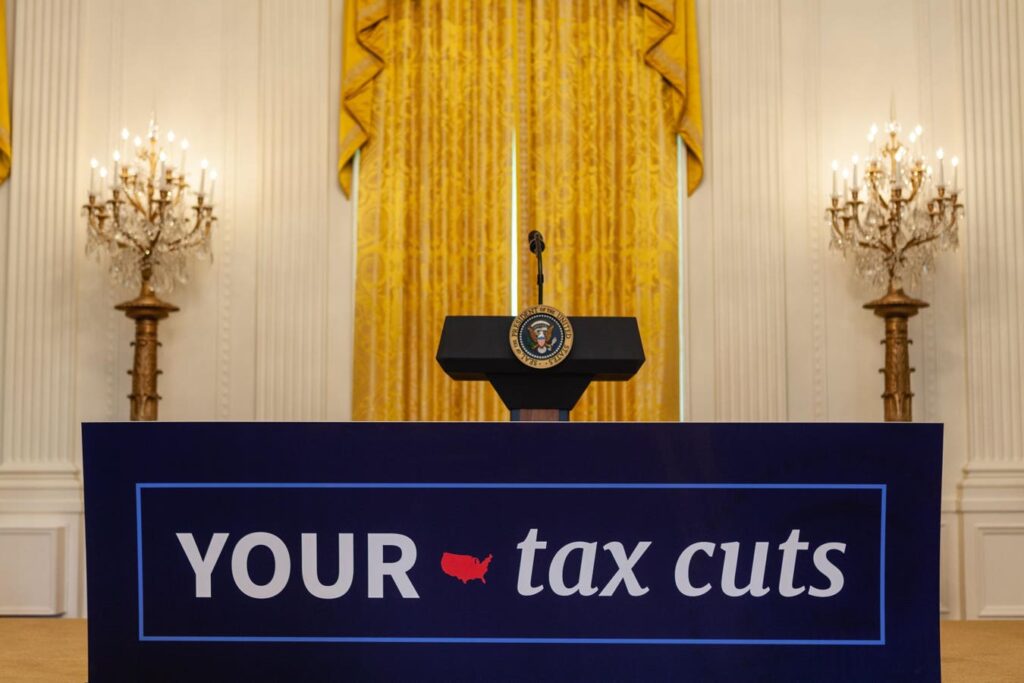On Dec. 22, 2017, President Donald Trump signed into law the Tax Cuts and Jobs Act. The new law made sweeping reforms to the existing tax code. Beginning in 2018, the TCJA is scheduled to expire at the end of 2025, unless Congress extends it or makes it permanent. With Republicans controlling the House and the Senate, most believe the TCJA will be made permanent. Who benefited most from the 2017 act? Some say the rich were the biggest beneficiaries while others say it helped middle- and lower-income people the most. Moreover, news outlets have published opposing views on the subject, adding to the confusion. Which is true? Did the Trump tax cuts provide a greater benefit to wealthy individuals? The answer may surprise you.
TCJA: Background On Trump’s Tax Cuts
Under TCJA, most marginal tax brackets were lowered except for the 10% and 35% brackets, which remained the same (see tables below, highlighted in yellow). All other marginal tax brackets were lowered. For example, the 15% bracket was reduced to 12%, the 25% bracket dropped to 22%, the 28% bracket fell to 24%, and so on.
TCJA also made significant changes in the income brackets that determine the marginal tax bracket of each taxpayer. First, under TCJA, the 10% and 12% income brackets increased slightly for inflation from 2017 to 2018. Next, a person filing single before TCJA would hit the 35% marginal tax bracket with taxable income above $416,700. After TCJA, that same person would be in the 35% bracket with a taxable income above $200,000 (highlighted in blue). In short, under TCJA, a single filer reached the 35% marginal tax bracket at a much lower income. Finally, the top bracket was reduced from 39.6% to 37% and the taxable income required to reach the top bracket was significantly raised (highlighted in purple).
Federal Income Tax Due Under Pre- And Post-TCJA
Let’s look at the total federal tax due and the effective tax rate (ETR) under each law with different levels of taxable income. Please refer to the following tables. The data indicates that at each level of taxable income, less tax was due after TCJA was passed. For example, a single filer with a taxable income of $50,000 paid about $8,239 under the old law (2017) and $6,940 under the TCJA (2018). This resulted in tax savings of $1,299. As the table shows, the tax savings under the TCJA ranged from $474 for a single filer to $16,129. The savings for married filing joint ranged from $199 to $31,852.
Additionally, with each income level studied, a taxpayer’s ETR was lower under the new law. The effective tax rate is determined by dividing the tax paid by the taxable income. The ETR is useful in tax planning, because it gives a taxpayer an understanding of the amount of taxes they are paying after allowing for all deductions, credits, and other factors affecting tax liability.
A look at the data reveals how a single filer with a taxable income of $50,000 saw a reduction in their ETR from 16.5% to 13.9% under the TCJA. The reduction in the ETR for a taxpayer filing single ranged from as little as 0.63% to as much as 2.69%. For those filing MFJ, the reduction ranged from 0.79% to a high of 3.66%.
Who benefited most from the TCJA? The answer depends on how you view the data. For example, if you look at tax savings as a percentage of taxable income in the single filing status, taxpayers with taxable income under $250,000 derived the greatest benefit. Turning to the married filing joint status, using tax savings as a percentage of taxable income, the greatest benefit fell to those with taxable incomes above $100,000.
When you examine the data using dollars saved, clearly the wealthier the taxpayer, the greater the benefit. That should not be a surprise as high-income taxpayers pay more tax than someone with a lower income.
So, which is it? Did the rich benefit more than middle- and lower-income taxpayers? The Trump tax cuts benefited middle- and lower-income taxpayers as well as those with higher incomes. In essence, the answer is both high- and low-income taxpayers benefited from the Trump tax cuts of 2017.
Read the full article here

